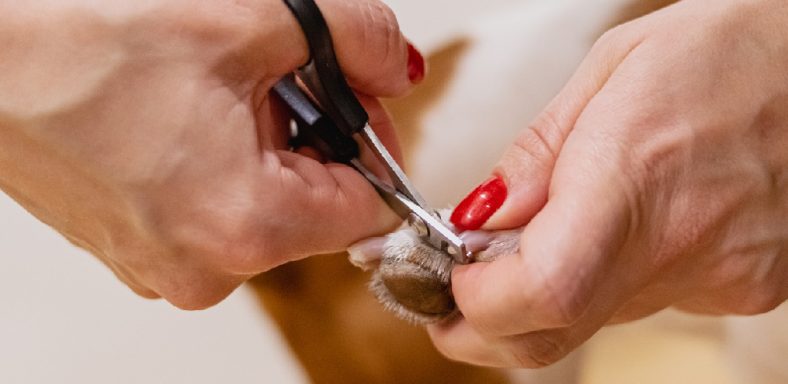When it comes to clipping a dog’s nails, some owners are hesitant to do it because they’re afraid of being bitten. However, with patience and training, you can quickly learn how to restrain a dog to cut his nails without any issue. This article will outline the steps you need to take to train your dog and make nail clipping a breeze properly. Keep reading for more information!
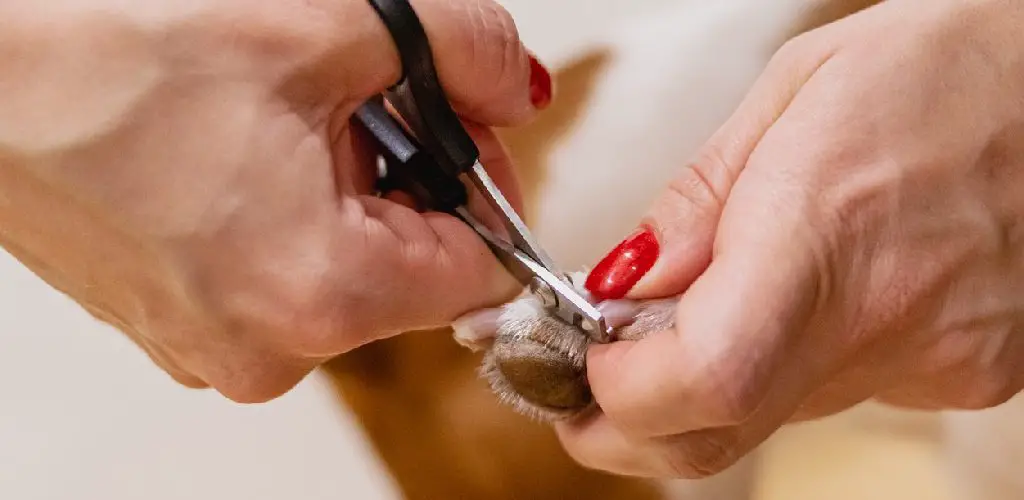
Dogs are naturally afraid of clipping their nails because it’s not a natural part of paw care. In addition, the process requires you to put your dog in an unnatural position which can sometimes result in pain or discomfort.
Contents
A Detailed Guide on How to Restrain a Dog to Cut His Nails
Step 1: Determine How To Restrain The Dog
The first thing you need to do is determine how you will be restraining your dog. There are many different ways people choose to restrain their dogs for this purpose, but the two most common methods are either with a muzzle or having an assistant hold the dog’s leash.
If you choose to muzzle your dog, make sure that you use a rolled-up towel or something similar to a rolled-up T-shirt (so the dogs cannot chew through it). You can either choose to buy a muzzle or make one yourself. When making one yourself, you want to make sure that there is enough room for your dog’s nose and mouth to breathe easily and also for him to drink water if needed.
Step 2: If Your Dog Is Aggressive
If you try the process described above and find that your dog is still way too skittish about having his nails clipped, then there are other options available for you that don’t involve trimming the nail itself. You can have your vet or groomer do it instead, or if you are crafty, you can attempt to do it yourself. You can purchase a dog nail grinder from your local pet store or an online retailer, and then you will be able to grind the nails down instead of having to cut them.
Step 3: Using A Muzzle
Before putting on the muzzle, ensure that your dog understands how it works. It may take several times before he learns not to try and fight it when he sees it come out of storage. For this method of restraint to work, make sure that you use a properly fitting muzzle. If the muzzle is too small, it could cause pain or discomfort, and if it is too big, your dog will be able to get his mouth around the front of it and possibly even chew through it (which defeats the purpose).
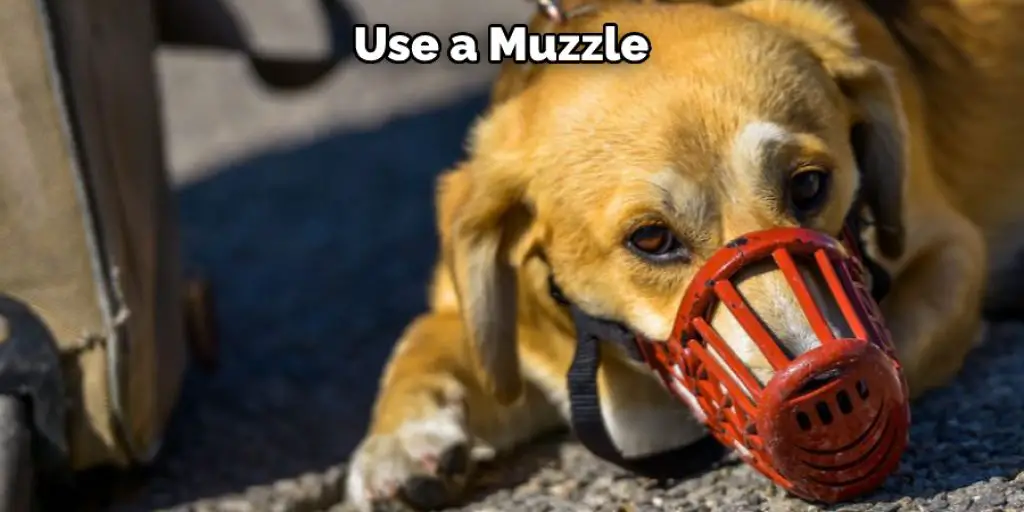
When restraining your dog in this method, do not forget to reward him with lots of affection and praise for being such a good boy! Once you have put on the muzzle, give your dog some time to adjust to wearing it before starting the actual process. How long this takes will depend on how easily your dog adapts to new things, so don’t fret if he doesn’t accept it right away.
Step 3: Using An Assistant/Having an Assistant Hold The Dog
If you choose to have an assistant hold your dog, make sure that they have a good grip and know-how (and are willing) to restrain the dog. If you choose this method, be sure to tell them how they should adequately hold your dog so as not to injure him. How your dog will react to this situation depends on his personality and past experiences with having someone else handling him. Some dogs become agitated when another person tries to handle them, while others take it in stride.
Step 4: Restraining For Dry Nail Clipping
Before starting the actual clipping process, it might be helpful for both you and your dog if you first try holding onto one of his paws for a few seconds and gently squeezing. This will get him used to the idea and feel of you having his feet in general, so he should be more comfortable with the process when it is time for you to start clipping. Of course, how much time this step takes will depend on your dog’s personality, but generally speaking, it shouldn’t take very long at all before he has relaxed enough so that you can proceed without fear of being nipped or bitten.
Step 5: Clipping The Nails
If your dog is calm enough, clip just one nail before stopping completely to give him a treat as a reward for being such a good boy during his first experience having his nails clipped. If he becomes agitated or nervous because of the actual clipping process, try wrapping him in a towel with only his head sticking out (so that he can breathe easily), and then give him a treat when you are done. How you handle the clipping process will depend on your dog’s attitude, so be flexible and adjust your strategy.
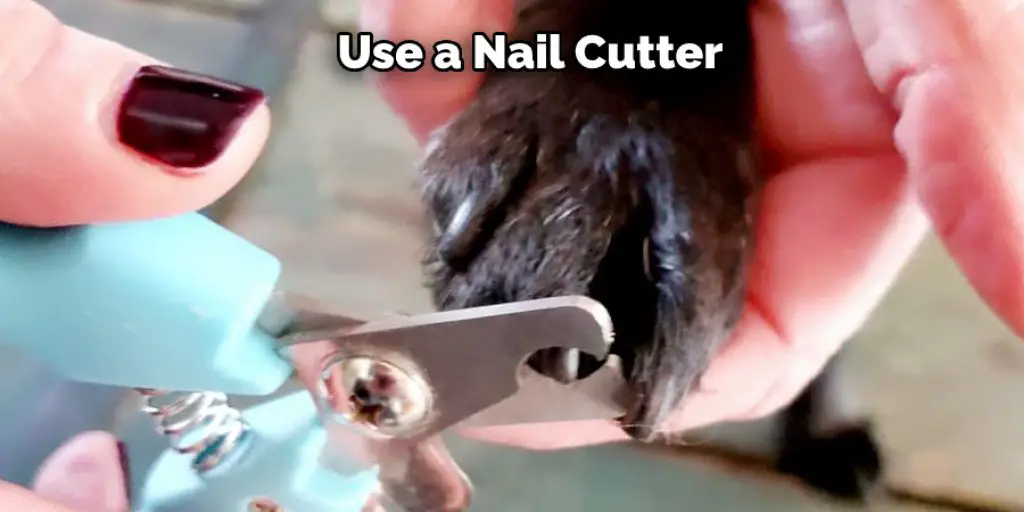
Step 6: How Often To Clip Nails
There is no set time interval when it comes to how often you should clip your dog’s nails but generally speaking, the more often you do it, the better and less painful it will be for both you and your dog. Some people choose to clip their dogs’ nails every week, while others might go as long as about three months or even longer in between clippings. How often you choose to do this will depend on whether or not your dog has dark-colored nails, which makes them easier to see than lighter-colored nails, whose quick would be harder to see. These steps will help in how to restrain a dog to cut his nails.
Tips and Warnings
Tips
- Stay calm when holding your dog and proceed with the procedure as quickly as possible.
- Cut the nails in stages, and give your pet a treat after each one.
- If your dog is very excited or resistant, you can try giving him some protein food to help calm him down before trying to cut his nails again.
- If your dog becomes so agitated that he can no longer be restrained easily, it might be best just to put the nail clippers away for that day.
Warnings
- Be careful not to cut nails too low, and try to use a Dremel if you aren’t sure how short to cut them.
- Avoid long sessions of cutting your dog’s nails, and do not let children use nail trimmers on their pets.
- Never cut into or attempt to cut into the quick of the nails with the nail clippers as doing this will cause a great deal of pain and discomfort for your dog and possibly even result in excessive bleeding.
- If you notice any signs of discomfort such as panting, whining, and staring at the clipping area, or you see blood begin to form, stop immediately and figure out what is wrong before proceeding with the clipping process.
What Are the Best Tools for Restraining a Dog to Cut His Nails?
You will generally need some restraint tools to cut a dog’s nails. This may include a treat, a high-value toy or item that you can use as an alternative reinforcer while the dog is in this position, and a muzzle. It may be possible for small dogs and puppies to hold them against your chest with their back facing outwards and their head facing forwards between your arms and holding onto their scruff (the loose skin on top of their shoulders).
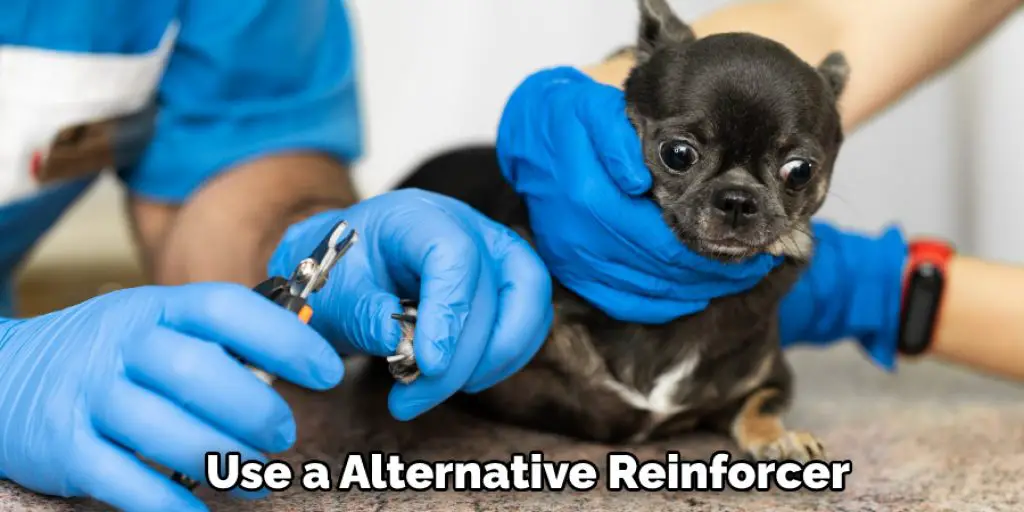
This may yield a more unified experience for some dogs. However, for many larger breeds, an assistant will be required to hold the dog on a table or the floor. It may also be necessary to use a restraint tool during the process, such as a muzzle or an E-Collar (also known as an Elizabethan collar). How you choose to use treats or toys during the procedure may depend on your individual dog’s history with restraint tools and how they feel about these different types of items.
If you require the assistance of another person to cut your dog’s nails, or if your dog is huge, you should consider using a muzzle.
There are several options when it comes to muzzles. The essential factor in choosing which type of muzzle is right for your dog is to test out different styles to see how he reacts, and also consider what you will be using the muzzle for (i.e., short-term restraint for nail clipping, long term muzzle training).
Conclusion
Whether you are a dog owner or not, it is essential to be aware of how to restrain a dog to cut his nails. It can be a daunting task if you are not prepared, but it can be done relatively quickly with the right tools and knowledge. Restraining a dog may seem like an unnecessary step for some people, but when done correctly, it can make the experience much less stressful for both the dog and the person cutting his nails.

